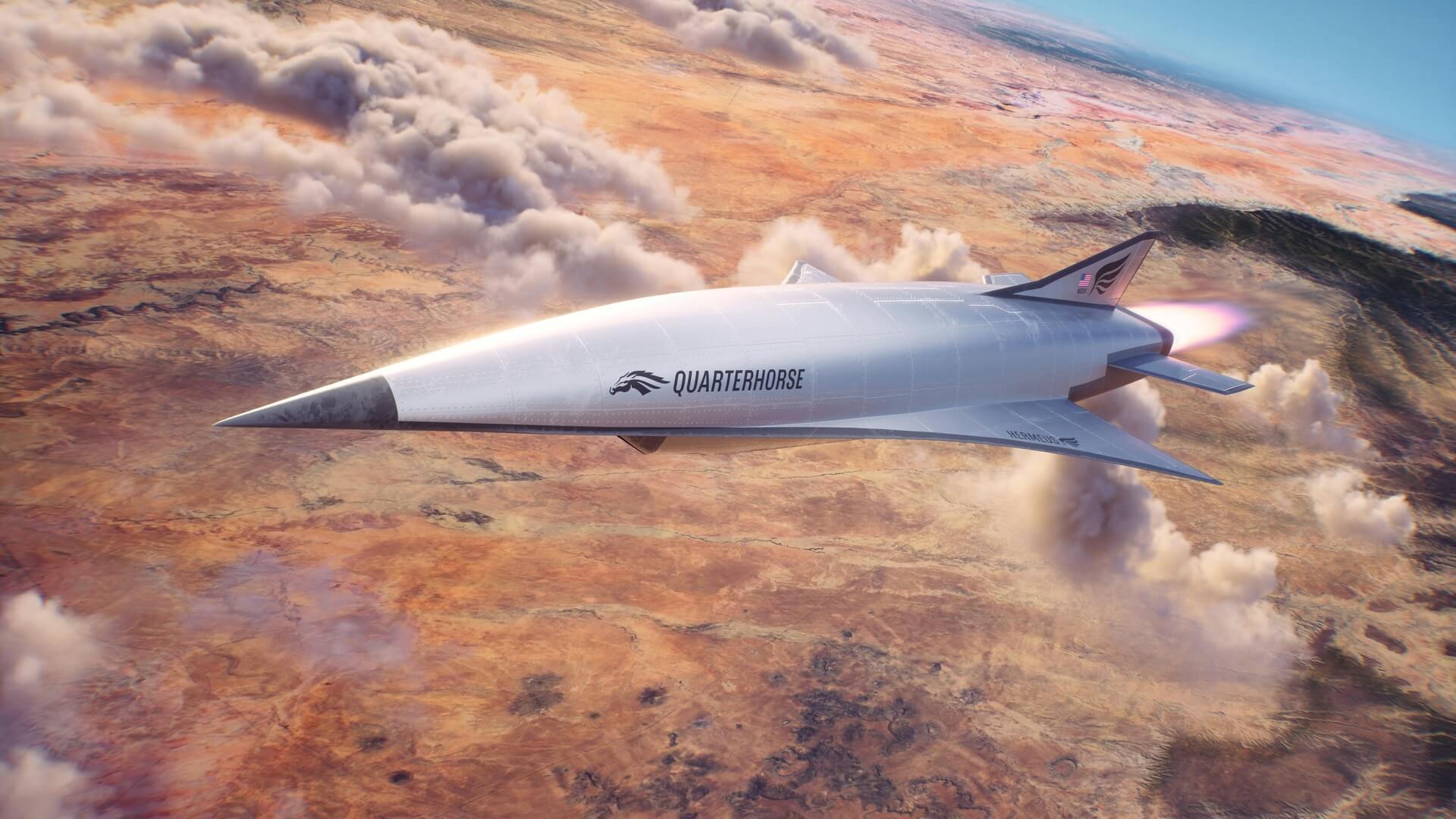



Revolutionized is reader-supported. When you buy through links on our site, we may earn an affiliate commision. Learn more here.
Operating in the hypersonic regime introduces complex engineering challenges across vehicle architecture, propulsion integration and control systems. This flight domain pushes beyond incremental improvements, requiring a systems-level rethink that accounts for extreme heat flux, shock-boundary layer interactions and high-enthalpy gas effects.
For industry professionals navigating this shift, mastering the mechanics of hypersonic flight is not optional — it is the foundation for delivering scalable, resilient and mission-capable platforms.
Hypersonic flight— defined as travel at speeds greater than Mach 5 — is not merely a faster form of aerospace movement. It is a transformative domain in high-speed engineering, reshaping defense strategy, global logistics and next-generation aerospace systems.
To grasp the engineering implications of hypersonic design, it’s important first to appreciate the distinct aerodynamic behaviors that emerge when vehicles operate in this extreme regime. Unlike supersonic flow, hypersonic flow introduces a range of nonlinear effects that challenge conventional assumptions and simulation methods.
One of the most critical phenomena is the interaction between shock wave forms and boundary layers. At hypersonic velocities, these interactions can cause sudden boundary layer separation, increasing localized heating effects and unsteady pressures. This can lead to unexpected structural loads and reduced vehicle control.
Additionally, the stagnation region — the point at which airflow is brought to rest — experiences intense heating effects that requires advanced prediction tools. High-fidelity computational fluid dynamics (CFD) is essential for accurate simulation, particularly when integrated with real-gas and chemical nonequilibrium models.
Compression lift is another central design principle in hypersonic flight. Vehicles such as waveriders are engineered to trap and ride their own oblique shock wave forms, effectively turning atmospheric resistance into usable lift. This enhances aerodynamic efficiency and improves lift-to-drag ratios at sustained hypersonic speeds. However, achieving these effects requires precise geometrical shaping and optimization across a narrow flight envelope.
Lastly, surface catalysis effects — chemical reactions at the vehicle’s surface that release or absorb heat — can significantly affect heat transfer predictions. These interactions are material-dependent and must be tightly coupled with thermal protection system design to avoid underestimating surface temperatures.
While achieving Mach 5 is already formidable, sustaining hypersonic speeds over extended ranges necessitates specialized propulsion architectures. Below are key propulsion strategies that have shown the most promise for future hypersonic platforms.
Supersonic combustion ramjets (scramjets) remain the most mature and studied propulsion method for sustained hypersonic flight. Unlike traditional ramjets that decelerate incoming air to subsonic speeds, scramjets combust fuel in a supersonic airstream, allowing for efficient operation.
The NASA X-43A program validated this technology in 2004, reaching speeds over Mach 9.6. Yet scramjets cannot operate from a standstill and must be coupled with an initial boost mechanism, often a rocket or turbine-based system, to reach ignition conditions.
Another emerging contender is the rotating detonation engine (RDE), which uses continuous detonation waves in an annular chamber to achieve combustion. Detonation-based combustion offers higher thermodynamic efficiency than conventional engines’ constant-pressure combustion.
The U.S. Naval Research Laboratory and the Air Force Research Laboratory have published studies demonstrating stable RDE operation under laboratory and field conditions. RDEs could one day augment or replace scramjets for certain mission profiles.
Turbine-based combined cycle (TBCC) engines represent a hybrid approach. These systems integrate multiple propulsion modes — typically a turbojet, ramjet and scramjet — into a single platform, transitioning smoothly between them as the vehicle accelerates.
For instance, the Air Force’s Aerospace Innovation Initiative has proposed TBCC systems for reusable hypersonic platforms. These engines offer mission flexibility, enabling horizontal takeoff and landing without reliance on expendable rocket boosters.
While propulsion technologies like scramjets, RDEs and TBCC systems show promise, transitioning them into reliable, flight-ready systems presents several unresolved challenges.
Fuel-air mixing in supersonic flows remains difficult due to extremely short residence times, requiring precise injector design and flow control. Combustion stability is another issue, particularly in scramjets and RDEs, where pressure or fuel fluctuations can cause blowouts or thermal spikes.
Thermal management is also critical. Internal engine components must withstand extreme temperatures over sustained durations. Solutions include regenerative cooling, high-temperature alloys and advanced ceramic composites.
Simulation tools and experimental setups — such as high-enthalpy shock tunnels — are essential for addressing these issues. They enable validation of models and provide critical data to refine engine designs for real-world performance.
The unforgiving environment of hypersonic flight demands materials capable of maintaining performance under extreme thermal and mechanical stress. Temperatures on the vehicle’s leading edges can exceed 2000°C, and localized heat fluxes can reach levels comparable to atmospheric reentry conditions.
To withstand these extremes, ultra-high-temperature ceramics (UHTCs), such as zirconium diboride and hafnium carbide, are being studied for their thermal stability and oxidative resistance combination.
Carbon-carbon composites — already used in space shuttle leading edges — continue to play a foundational role due to their high specific strength and tolerance for thermal cycling. NASA’s Hypersonic Materials and Structures program has supported material evaluations under both steady-state and transient heating profiles.
Traditional manufacturing methods struggle to meet the geometrical precision and thermal performance required by hypersonic vehicles. This has increased reliance on additive manufacturing, particularly in fabricating heat-resistant structures with internal cooling channels or complex topologies that dissipate thermal loads more efficiently.
Off-the-shelf industrial components are typically designed for general-use tolerances. In contrast, hypersonic systems demand bespoke parts engineered for the exact load paths, material stresses, and thermal conditions encountered at Mach 5 and beyond. By leveraging 3D printing technologies, aerospace engineers can customize component geometry and composition. This leads to better performance, reduced part count and faster iteration cycles.
Thermal protection systems (TPS) are equally vital. Ablative systems — common in space reentry vehicles — work by sacrificing material layers to absorb heat, but they are generally non-reusable. Reusable insulation systems, on the other hand, offer longevity but may be more susceptible to mechanical damage. These include insulation systems such as flexible reusable surface insulation (FRSI) and ceramic tiles.
An ongoing area of innovation is integrated TPS solutions, where the material itself provides structural support and heat shielding. For example, multifunctional materials are being developed to reduce system weight by combining structural, thermal and sensor capabilities in a single composite.
Oxidation protection is another key requirement. Many UHTCs oxidize rapidly at high temperatures, forming volatile oxides that can erode surface material. Advanced coatings — such as silicon carbide-based barrier layers — are applied to protect against this degradation.
Even as component technologies mature, integrating these systems into deployable platforms introduces a host of logistical, manufacturing and control challenges. High-temperature sealing between components, real-time thermal health monitoring and vehicle control under rapidly shifting pressure regimes are just a few.
One specific integration challenge lies in managing thermal gradients across disparate material interfaces, which can induce stress fractures or delamination. Mismatched thermal expansion coefficients between a nose cone and the surrounding airframe can result in catastrophic failure under sustained load. Precision manufacturing techniques, like friction stir welding and additive manufacturing, are being explored to mitigate these risks.
Furthermore, hypersonic vehicles experience communications blackouts due to ionized plasma sheaths forming around the body. Overcoming this requires advanced communication technologies like phased-array antennas or relay satellites designed to penetrate or route around plasma envelopes.
On the systems level, real-time guidance, navigation and control (GNC) becomes increasingly difficult at hypersonic speeds due to actuator lag and limited control authority. Solutions under development include adaptive flight control laws, AI-enhanced prediction systems and sensor fusion architectures.
Hypersonic flight represents more than a single technological milestone. It demands the integration of advanced disciplines across propulsion, materials and control systems. As prototypes move toward operational readiness, success will hinge on systems-level coordination, industrial adaptability and alignment with national defense objectives.
Revolutionized is reader-supported. When you buy through links on our site, we may earn an affiliate commision. Learn more here.


This site uses Akismet to reduce spam. Learn how your comment data is processed.